
a.
Graph the model.
a.
Answer to Problem 44E
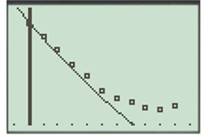
Explanation of Solution
Given information:
The table shows the numbers
A model for the data is given by
Y13y
Where
Use a graphing utility to create a
Calculation:
Using
Enter the data from given table into your graphing utility calculator.
To enter the data first press
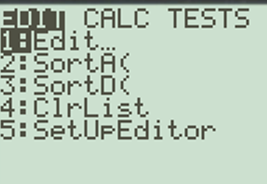
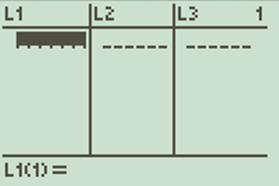
Now input all the data given sets followed by
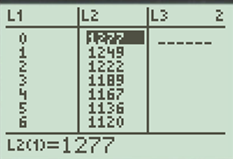
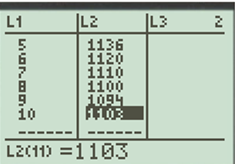
Before you use regression feature, make sure to enter the DignosticOn command stored in
The calculator does not show the value of
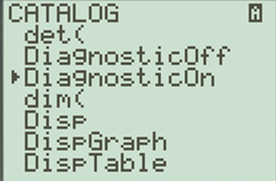

To plot the data, press the
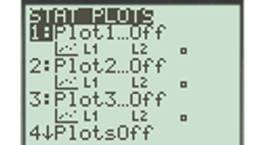
Press
Now press

Now press

The plot of the data will appear as below:
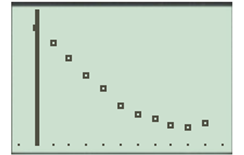
To graph the model
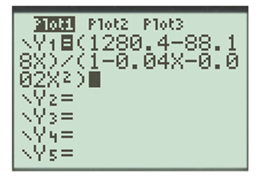
Press the
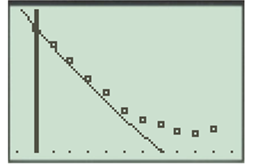
The graph of the model does not pass through all the points, some points at the end are far apart from the model curve.
Hence, the model does not fit the data after year 2000
b.
Predict the number of military reserve personnel in 2017.
b.
Answer to Problem 44E
Explanation of Solution
Given information:
The table shows the numbers
A model for the data is given by
Where
Use the model to predict the number of military reserve personnel in 2017.
Calculation:
To find the average monthly benefit in 2017, replace
Hence, the average monthly benefit in 2017 is about
c.
What is the limit of the function as approaches infinity?
Do you think the limit is realistic?
c.
Answer to Problem 44E
Explanation of Solution
Given information:
The table shows the numbers
A model for the data is given by
Where
What is the limit of the function as approaches infinity? Explain the meaning of the limit in the context of the problem. Do you think the limit is realistic? Explain
Calculation:
Determine the limit of average monthly benefit function as
Hence, the limit of military reserve personnel function as
As time increases, , the number of military reserve personnel will decrease and then again increase and it will never become
Hence, the model is
Chapter 12 Solutions
Precalculus with Limits
- I circled the correct, could you explain using stokearrow_forwardUse Euler's method to numerically integrate dy dx -2x+12x² - 20x +8.5 from x=0 to x=4 with a step size of 0.5. The initial condition at x=0 is y=1. Recall that the exact solution is given by y = -0.5x+4x³- 10x² + 8.5x+1arrow_forwardFind an equation of the line tangent to the graph of f(x) = (5x-9)(x+4) at (2,6).arrow_forward
- Find the point on the graph of the given function at which the slope of the tangent line is the given slope. 2 f(x)=8x²+4x-7; slope of the tangent line = -3arrow_forwardUse the product rule to find the derivative of the following. p(y) (y¹ + y²) (6y¯³-10y¯4)arrow_forwardplease dont use chat gptarrow_forward
- Find this expression in frequency domain in a expression y(t), in time, that is.arrow_forwardplease dont use chat gptarrow_forwardQuestion Given the graph of f(z) below, find the graph of the derivative of f(z). Select the correct answer below: ° 7-6-5-4-3 123 ° ° 2 -7-6-5-4-3- 123 -° 2-4 -°- °- -7-6-5-4-3-2-1 1 5 +arrow_forward
 Calculus: Early TranscendentalsCalculusISBN:9781285741550Author:James StewartPublisher:Cengage Learning
Calculus: Early TranscendentalsCalculusISBN:9781285741550Author:James StewartPublisher:Cengage Learning Thomas' Calculus (14th Edition)CalculusISBN:9780134438986Author:Joel R. Hass, Christopher E. Heil, Maurice D. WeirPublisher:PEARSON
Thomas' Calculus (14th Edition)CalculusISBN:9780134438986Author:Joel R. Hass, Christopher E. Heil, Maurice D. WeirPublisher:PEARSON Calculus: Early Transcendentals (3rd Edition)CalculusISBN:9780134763644Author:William L. Briggs, Lyle Cochran, Bernard Gillett, Eric SchulzPublisher:PEARSON
Calculus: Early Transcendentals (3rd Edition)CalculusISBN:9780134763644Author:William L. Briggs, Lyle Cochran, Bernard Gillett, Eric SchulzPublisher:PEARSON Calculus: Early TranscendentalsCalculusISBN:9781319050740Author:Jon Rogawski, Colin Adams, Robert FranzosaPublisher:W. H. Freeman
Calculus: Early TranscendentalsCalculusISBN:9781319050740Author:Jon Rogawski, Colin Adams, Robert FranzosaPublisher:W. H. Freeman
 Calculus: Early Transcendental FunctionsCalculusISBN:9781337552516Author:Ron Larson, Bruce H. EdwardsPublisher:Cengage Learning
Calculus: Early Transcendental FunctionsCalculusISBN:9781337552516Author:Ron Larson, Bruce H. EdwardsPublisher:Cengage Learning





